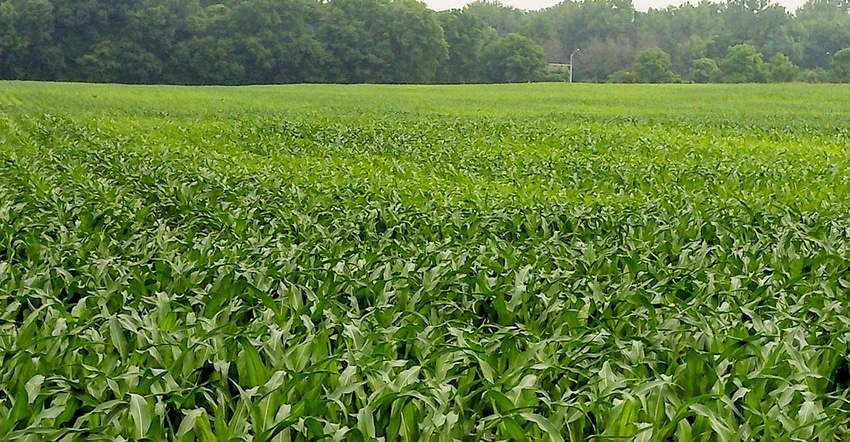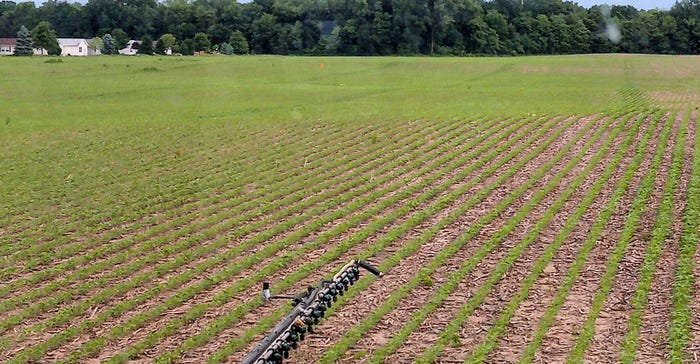June 15, 2018

Saturday, I picked up our oldest from touchstone energy camp. After writing an essay, she was selected to attend this REMC-sponsored camp for sixth grade students where she learned about electricity, along side those standard camp activities. So I ended up doing a 150-mile tour in northwestern Indiana, traveling there one route and back another. I nearly made it south to Lafayette, west around Monticello, and north back to home.
What did I see?

We have been working to figure out what went wrong on a fertilizer application in this field this spring.
To sum it up, at the south end of the tour, crops look pretty good, but the further north you go, the more issues there are. Here at home we are on middle ground. We have been wet, but it has been wetter further north. That stayed true this weekend as north east of us was ponded up again, receiving more than 2 inches in recent days.
In our immediate area, there are very clearly some fields that experienced nitrogen loss from excess moisture.
We also experienced a few brief GPS outages this spring. Sometimes they caused gaps in planting until the radar picked up the slack. Other times, the driver may not have been paying attention.
Fertilizer mystery
We have been working to figure out what went wrong on a fertilizer application in this field this spring. When I pulled in to spray a field of soybeans last week, I noticed strips across the field. The strips were taller and greener than on either side.
Two companies made applications to the field, each one using a multiplier bed and applying two products at a time.
I have been out there a couple of times; each company has been out there, and an agronomist has spent several hours in the field trying to determine which product(s) were mis-applied.
We have received one set of soil samples back, as we wait for more to narrow down which product is in those strips.
Right now, the working theory is that the spinners that spread the fertilizer were not up to full speed. We think that if they were completely off it would have been toxic and killed the germination of the beans, as corn was killed on another field the agronomist has been investigating.
We have checked fields spread before and after this field and it seems to be an isolated event. I am going out one more time to look at the field with one of the applicators. Hopefully we can get this figured out and make an application to rectify the situation.
We have also seen many fields with Rapid growth syndrome. There are many names for this condition, but apparently it happens when the corn is growing so fast the leaves don’t get much sunlight before they unroll from the whirl.
The opinions of the author are not necessarily those of Farm Futures or Farm Progress.
About the Author(s)
You May Also Like






